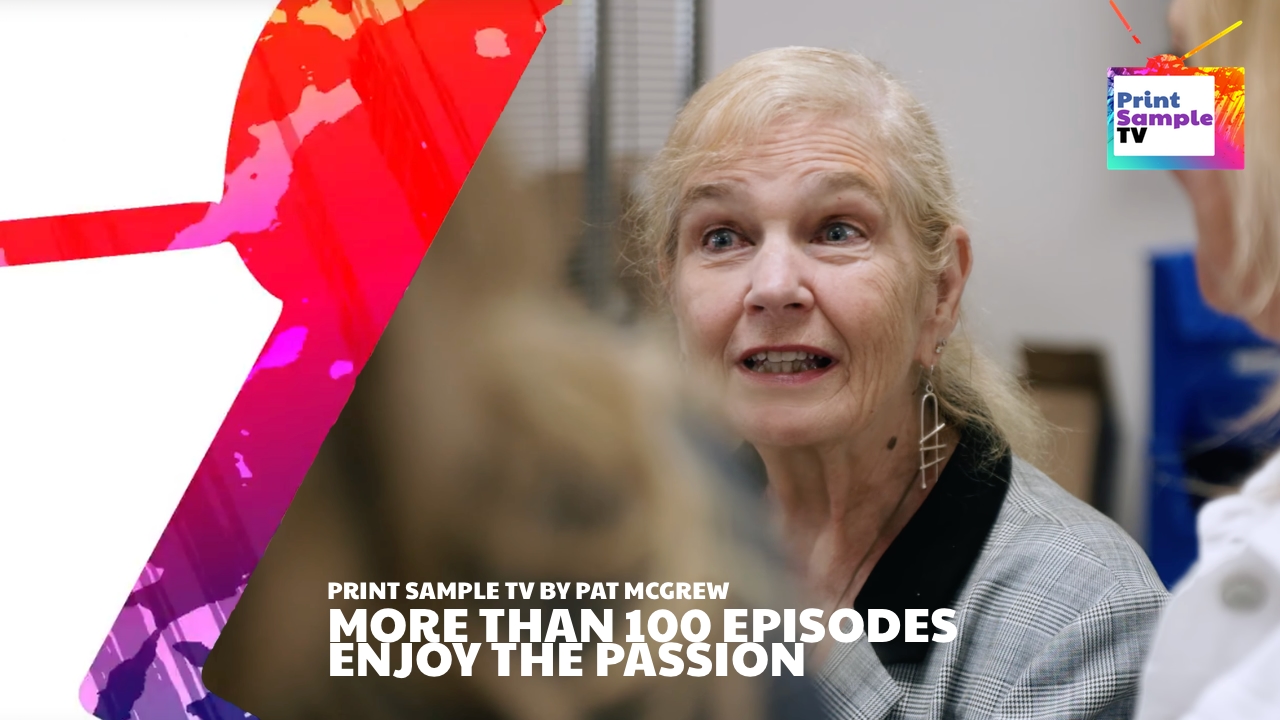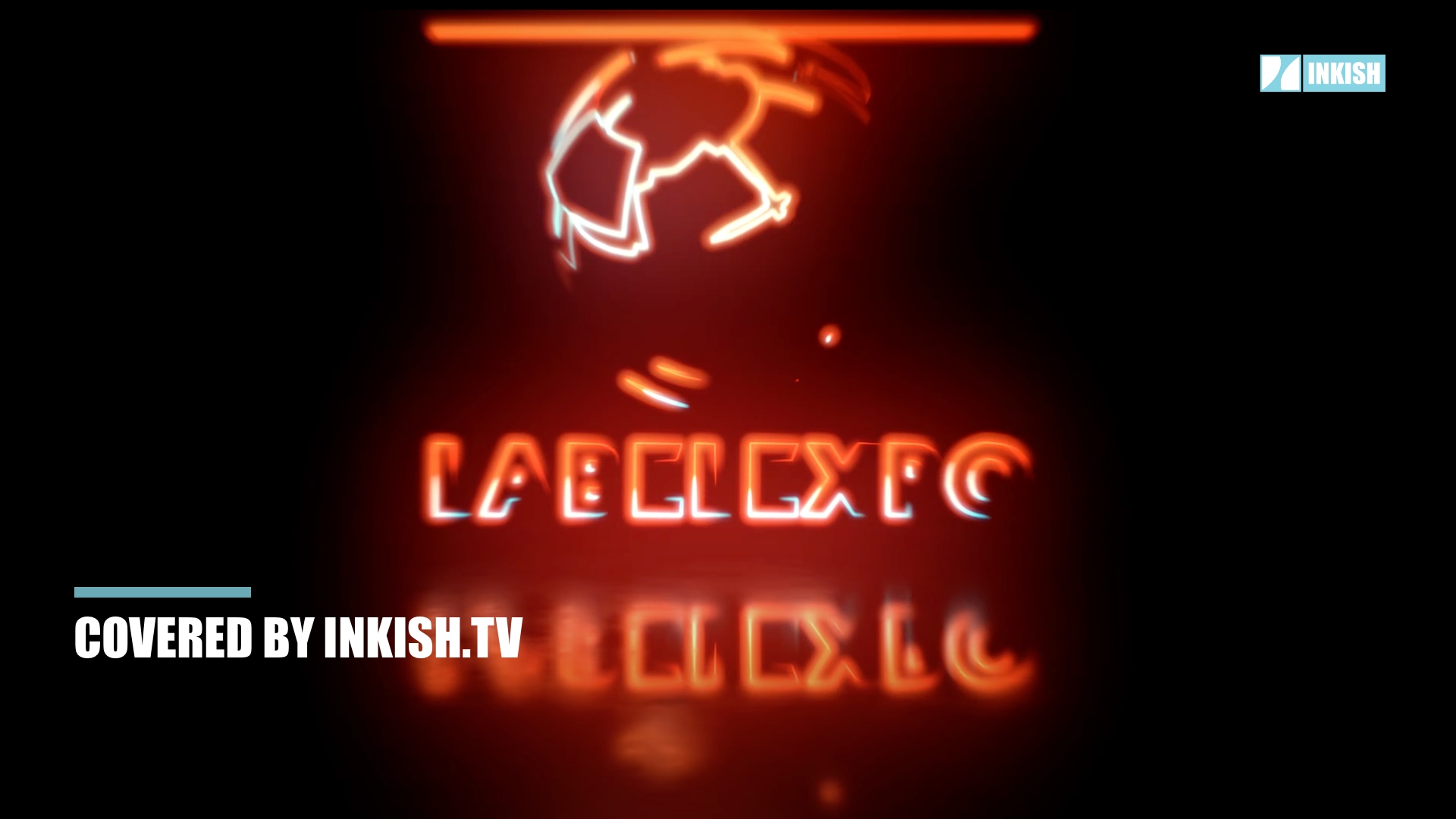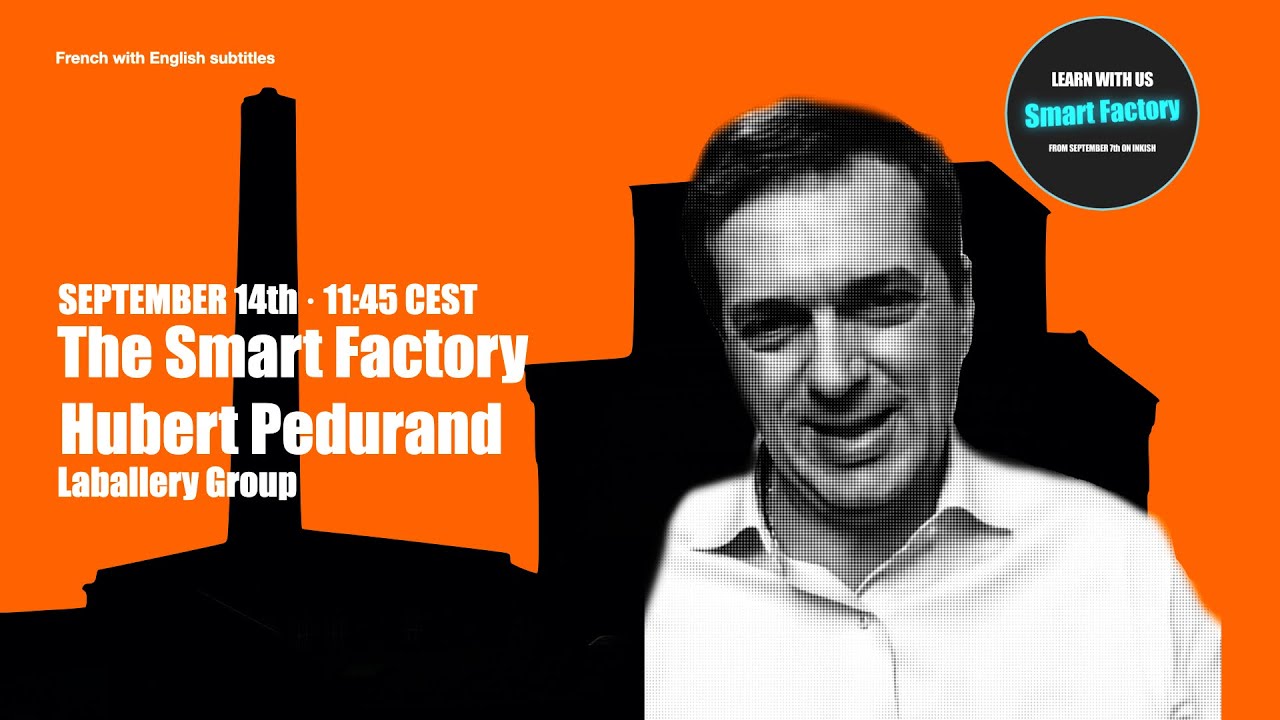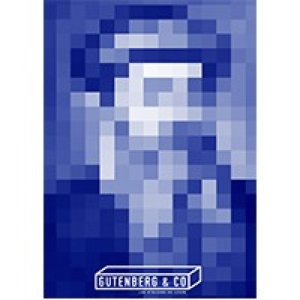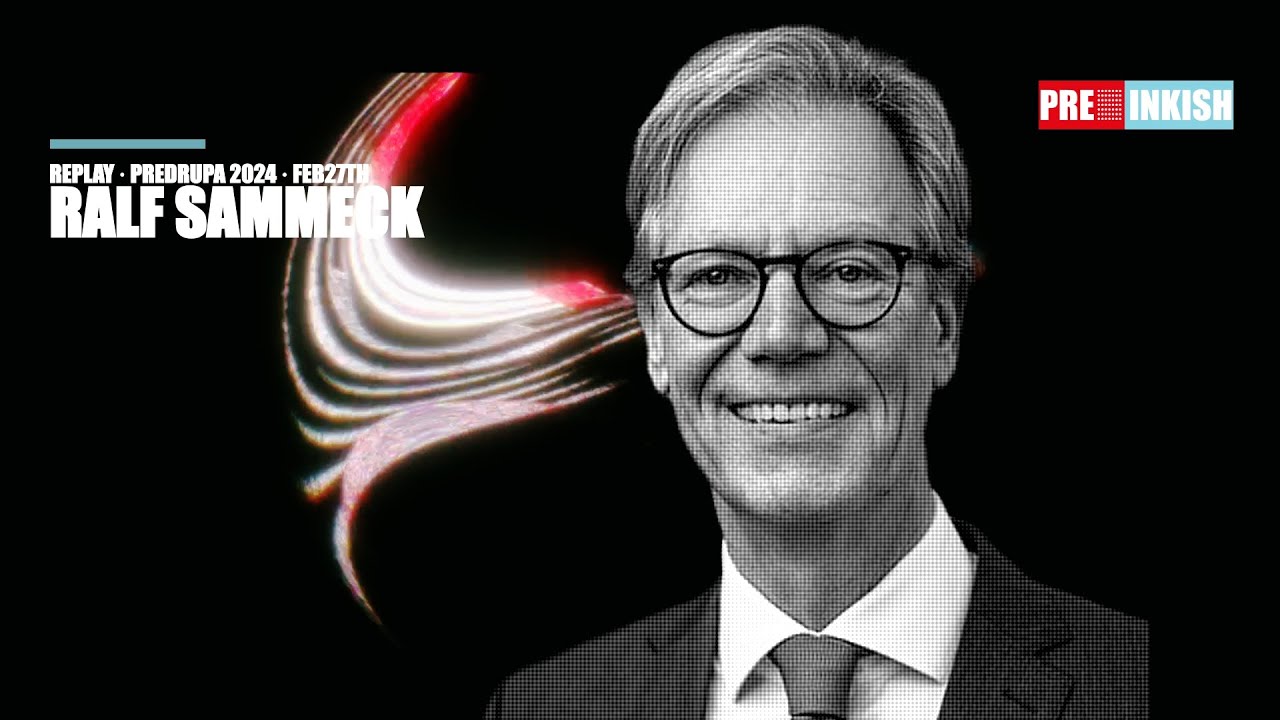Hubert Pedurand · Gutenberg/Laballery Group · Smart Factory Break Out Session
–
Welcome to the SMART FACTORY
Yves and Hubert, so excellent.
Yves, I propose you to speak, so thank
you very much Hubert Pedurand, Pedurand for joining
our “Smart Factory” week and for me it
was an obvious choice, especially with the concept
of “Gutenberg One” which really responds to
all the innovations of the future.
And also I know but I’ll let you introduce yourself
in a few moments, you are the CEO of
several printing plants, and there too, where
there is robotization, but during this
session, we will focus mainly
on this technology, this robot.
We just finished with Jacques Mikiels a session
that was, precisely, intended to set the
scene, which was Industry 4.0.
What Industry 4.0 is, we will rather talk about
in the present, what is Industry 4.0 and
also about the new industrial strategies that it
allows to put forward, to facilitate some
industrial strategies, they are not new when
we talk about printing per unit, some
printers have already implemented this type of
approach or the term mass personalization.
It’s a term that dates back to the ’80s.
You can see that this is not
new, but 4.0 facilitates these strategies.
And today, so this afternoon,
in this first Breakout Session.
We’re just about to go to Jacques have you
downloaded, or I’m going to share my screen,
have you downloaded it already?
Yes, I will.
I’m going to start Hubert’s presentation, so
from there you can continue down there.
So you will see the buttons
to go forward and backward.
And that way, you’ll have the platform to
introduce yourself and do your talk about the
robot, among other things.
So here are just two seconds, so, my
Benelux audience and therefore the Belgian audience
too is very interested in what’s going on
in France, of course, we’re strongly linked.
And so, after your presentation and our
conversation, which we’re going to see together,
so the next session, but I’ll
put the link in the chat.
For those of you who are interested, we’ll go
on to one of your colleagues, but a Belgian
colleague, a printer who is also somewhat involved in
what you do, but well, more in the
academic world.
So you’re talking more about printing per unit,
I think with your, with your concept,
while Luc Peeters of Peeters Printing, and
Publishing Peeters, they’re actually a little
bit in the print runs, say from one,
a hundred to thousands, also, completely in the
environment, digital printing.
But here we are, so I’m very, very interested
and I’m very happy to have you on our
platform and so here we are, so
I’m going to start the presentation.
There you go, I give you,
I give you the word Hubert.
So, thanks to your community of…
to pay attention to what I try
to do and undertake for our profession.
You can hear me now.
Yes, very, very good.
We can hear you very well.
The only thing we’re going to do is to be
careful to cut our microphones so that we don’t,
in fact, cut them off, because there’s a
background noise, that’s what we’re doing to
avoid interference.
You see the slides, Hubert?
I see, I see the slides, yes,
it’s yours, Yes, so Hubert Pedurand.
I am above all a man who is interested
in writing, in reading and how, in these
difficult times we live in?
How to be?
How can we make knowledge accessible
to as many people as possible?
That’s what writing is for, to transmit.
And as a printer, since I’ve been lucky enough
to print books for almost 20 years, and in
particular for the last 5 years, I’ve been
running 3, 3 beautiful companies that
specialize in book printing and in
particular black and white, monochrome, paperback
books. So, it’s the Laballery printing house in
Bourgogne, which is a cooperative, so it
innovates, we also innovate on the social side,
the Floch printing house, which is there
on the massification on a web press basis,
three beautiful web presses that were built by
successive generations of the Floch family and
which have a long tradition of printing
engineers. So, we have what we call Rotopages,
which are machines on a flexographic basis
that allow us to do mass production for
what I call bookbusters compared to blockbusters
in the movies, so the latest one we
are printing in bookbuster is the Joël Dicker
“L’enigme de la Chambre 622” and we are
going to approach one million copies printed.
So I have the chance, between Laballery on short
and medium runs and Floch on very long
runs as well, to run the Source d’or in
Clermont-Ferrand, which is it on small runs of
around 1 to 100 copies.
So I am fortunate to have the spectrum, a
fairly broad spectrum of what the market is
asking for and the technical and industrial reality
and the reality of the costs in
relation to what we are being asked for.
The observation in the market is that
we printers have a very strong
pressure on prices and an
even stronger pressure on deadlines.
And very sincerely, when I began to think
about the automaton that became the “Gutenberg
One” automaton, I got back into the skin of, I
tried to modestly put myself in the skin of
Gutenberg, when he had copyist
monks in front of him.
And how do we get
beyond the popularization of knowledge?
He had this great idea.
The Chinese got to him long before
he did on the printing press.
But his particularity was to invent lead
and antimony based movable typefaces, capable of
re-melting some of this alloy
to recompose typefaces ad infinitum.
Thus, he has, with his invention, made
culture accessible to the greatest number.
I would say that 500 years later, what I
have tried to do is to continue his obsession
with making culture accessible
to the greatest number.
The difficulty I had was how to
manufacture a single book, in a single
quantity, in an economically viable way
and with a truly industrial
focus. So, the “Gutenberg One” robot was the
subject of six years of research and
development on my part.
And I have worked in particular with a
robotician in Strasbourg, not far from Saverne,
called R&D Technology.
And on my proposals, we ended up with a
proof of concept which is the Gutenberg One robot,
which has now appeared on
the market two years ago.
So, the team, I created a structure to
incubate my invention, so this structure is called
“Gutenberg & company”, and the objective of Gutenberg
& company is to exploit my patent.
The purpose of the patent is to
make it possible to manufacture a
book in front of the customer
in less than five minutes.
Depending on the print engine, it will vary from
2 to 10 minutes, it’s related to the
pagination also of the book and its format,
but on average, a 400-page book in 10/18
pocket format, since the robot is also able to
do two poses and to do what is called
Coming & Going, and the superimposition of blocks
from an A4 block, we halve the
production time for everything in A5 and smaller
format, so on average, a book produced by
Gutenberg is 5 minutes, indeed.
So that’s the name of the patent, it’s
“device for robotic printing of single books and
associated processes”.
The patent has worldwide coverage.
If I go on to look at the market
situation, we are dealing with a market of
EUR 2.77 billion.
Here we’re in a market that’s pretty
stable because the book is relatively resilient.
We see it in times of crisis.
We consider that 80% of the
book arrives at booksellers or equivalent,
and 20% of the quantities are made
via the Internet, ordered via the
Internet. I, I did not consider e-readers and tablets
to be a real market since I consider
that at 5%, it is a tool that is
complementary to paper and does not really threaten
paper. If, and only if, there are
still printers tomorrow, then the fundamental question
that obsesses me is the survival of
our industry in a context of increasing
dematerialization, with the rise of platforms such
as Amazon and others that, tomorrow,
could perfectly well be equipped with print to
produce the quantities they will have sold.
Obviously, in this context, if I have some
convictions, forgive me, I have no certainty of
what will be, what will be the future.
The Gutenberg One, it was also designed
to do what I call self-printing and
self-publishing. In France, at the moment, we
consider, we estimate that there are about
200,000 manuscripts that do not find authors
and whose circuit to materialize access is
really very, very complicated.
So Gutenberg One will allow booksellers who would
be equipped to become, as in the 18th
century, publishers, booksellers and printers with
the ability to bring literary creation
to life in the area where they are located.
So Hubert, if I understand correctly, tomorrow, if
I want to publish my thesis, I could
very well go to a bookstore, bring my
manuscript and come out of the bookstore with
several copies or a copy of
my thesis or my self-published work.
Yes, Yves, that’s exactly it.
And I would say that it will still
be much simpler because, associated with the Gutenberg
One automaton which will be in retail mode, there
will be all the front office and the
back office with the
catalogues of the titles.
But the front office, there is therefore an
interface which will allow you, Yves, to write
your book from your sofa and to be geolocated
to produce, so that your book is produced
with the lowest possible ecological cost in
relation to your place of living.
That’s really what Gutenberg was aiming for.
On the page that is here, we consider that 50% of
the price of a book in France and we can
say that at European level, it
is also the same situation.
That 50% price is inefficiency.
It’s worthless.
It’s in that 50%, you
already have 25% unsold copies.
You have the uncertainty of the sale.
You have the pestle.
You got the overstock.
Anyway, um…
Gutenberg One, I dare say, I dare say,
even if sometimes I’m not understood, makes it
possible for the book to be accessible
worldwide in streaming mode, so streaming, it
doesn’t mean that the book will be rented,
streaming is the constitution of a network, a
cluster with, like Napster, points that will
interconnect with each other, and if an
author who wants to publish on Fifth Avenue
in Manhattan, his book will be immediately
available in a fraction of a second, everywhere,
there will be the Gutenberg One Network
in the world, it means that an author, a
micro author at the local level, can be visible
at the global level.
Gutenberg One doesn’t change much.
It is also a distribution channel.
I don’t claim to replace the existing
distribution channels with this channel, those of
the major publishers who also control
this part of the business, i.e.
the entire logistical stock, the
return trip of the book.
This is important because printing houses like
Laballery like Floch or the Source d’or
need this channel to continue to live.
But you have to realise, Yves, that in
France, we have about 110,000 new products, new
editions that are published every year.
The average bookseller has
50,000 references in stock.
How do you want it to
be the guarantor of cultural diversity?
How do you expect him to be the guarantor
of access to books when Amazon has infinite
depth of catalog as it can expand
its warehouses all over the world?
There’s a real complexity of accessing books
locally and making every bookseller a local
competitor of Amazon.
And there are not 36 solutions to do it, I
had to reinvent the book with a glued square
spine, that’s what I did with Gutenberg One.
I had a question at that point, and that
was, of course, I understand very well for the
self-publishing market, but for the broader market,
are publishers willing to share their
files so that they can be rematerialized in
the various places where your technology is
installed?
You know, Yves, I’m going to
answer you with a parable.
Would you have asked?
I’m not comparing myself to the great
inventor I’m going to name right now.
But would you have asked Thomas Edison this
question when he invented the light bulb in
relation to candle sellers,
No, I wouldn’t have posed, obviously,
So if you want the
question, that’s it, there’s progress.
What do we do with this progress?
The advantage of this progress
is to find its usefulness.
So, I have a role which is a pedagogical
role that I must have towards the publishers.
Of course, customers, when you see how
quickly purchasing habits change given the
ecological context that is pushing very, very
hard towards a model like mine, the
publishers, they can turn
the question around.
The candle is no longer of much use today, and
even less so, to keep up with the millions
of millions of copies in stock, some of which
are still in francs, even though we are
already in euros.
So, the question is the whole back catalog.
This famous long tail that we have, which
today, Yves, is capable of valorising in a
context of instantaneity that is imposed on
us by the networks and this hyper
dematerialisation of our professions.
So the question is whether publishers want
to enhance the value of their holdings,
particularly by telling authors who, authors for
a publisher, that’s their raison d’être
and telling the author.
All your titles, even those over 30 years old,
those over 40 years old, those over 70
years old, are still accessible in less than
five minutes on the Gutenberg One network.
Who is capable today of doing that, of saying,
Yves, your book, your first level 50 years
ago, is still available today.
What I like about it is the fact that
your technology can produce at the point of sale,
which I find very interesting.
There are partnerships, we see Hachette
with Lightning Source for example, Ligntning
Source, which allows Hachette
to expand its catalogue.
And it’s true that the partnership between
Hachette and Lightning Source, even if
Lightning Source is based in Maurepas, on
their distribution site, goes through the
channel of sending the item by mail to
reach the customer, whereas with your technology,
that’s what I find interesting, it’s being able to
have the item at the point of sale or,
as close as possible to, as
close as possible to my home.
And it addresses both carbon footprint issues
as you say, is also relevant
sources for booksellers and so on.
On my side, I see perhaps more a
complementarity, there is Lignhtning Source, I know that
AGG Print with the beebuzziness platform
also, tries to answer this issue.
There are several initiatives.
And as you also remember very well, I
think very quickly platforms such as Amazon will
also position themselves on this type of market, but
not in any case, not on the point of
sale as you can propose,
the place of sale but I would say, Yves,
beyond the, beyond the place of sale, the place
of contact of the book.
Why would media libraries, libraries would not
equip themselves, why would colleges, high
schools, universities, campuses
not equip themselves.
Perhaps it is the bookseller who must
also equip media libraries and libraries.
I don’t have a problem with that.
My concern is simple.
It is that we have a crazy cultural
diversity that is getting poorer because we are
finally going to sell all the same
things, that is to say, few references.
Maintaining diversity is absolutely valuable.
And you can’t ask a Lighthning Source
or Interforum’s Copernics to keep millions and
millions and millions of titles in the
catalogue, because it’s not profitable for them.
And when you need, I don’t know, a book that’s
more than 30 years old and you’re told no,
it’s not available, but eventually, we
can scan it for you.
You have to wait 15 days, 3 weeks and
then when you arrive, you’re finally brief …
The work behind it and colossal, while
the printer’s smartphone, because that’s what it’s
all about with Gutenberg One.
I dare to put, I dare to
offer, I don’t put anything.
Again, I have convictions, but
I have no certainties.
The certainties will be the market who, who,
who, who will say if I was right.
But my conviction is that this tool makes
it possible to make an infinite diversity of
titles accessible.
And we’re able to turn the bookseller
into Amazon’s local mini-competitor on 4 square
metres, whereas Amazon or Lightning Source would
need tens, hundreds of thousands of
square metres to get a copy of each title.
Do you report back to planet Earth?
Two million new copies are published every year,
mainly in China, followed by the United
States, Germany and France.
France has 110,000 new titles,
new editions per year.
The Chinese are, have a need for literature
and transmission that is four times greater
than ours.
So Gutenberg One, it is universal and in a
country that will come out, I hope, of the
Covid one day and other countries likewise,
the mixture of peoples, this wealth of
peoples, this Babylon of culture.
No bookseller can do that today.
Gutenberg allows the multiculturality of the world’s
diversity of writing in one point.
You are German, you are going to Bourgogne, you
want a title on Goethe in your own
language, you have to be able to say:
“Yes, in five minutes, you have it”.
You are Chinese, you are in Paris, you
want a book from the dynasty …
from a few centuries before Christ, which is
digitized, where you can put it back.
Exactly. And I’m taking advantage of that.
What’s the difference with the Espresso book
thing that has the same positioning?
What is the difference between Gutenberg One
and the Espresso Book Machine, which is
already a few years old in American
universities or in bookstores in England?
So there’s not, there’s
not just one difference.
There are many differences.
The first, the first difference is that the
technology used by the Espresso Book Machine
is obsolete.
The kinematics which is embarked on
the paperback part thus the finisher
of the EBM.
I know it well, I have six of them from
Espresso Book Machine and I was able to study the
holes in the racket of this tool perfectly.
So this tool works, but it works at
its own pace and sometimes with some operating
instabilities. But I’m not throwing
a stone at any automaton.
The stability of the tools
can be seen in use.
The main differences are
in the concept itself.
The Espresso Book Machine works on production
sequencing, whereas I’m really into additive
synthesis, for example glued square spine, which
is really central to my patent, I’ve
totally reinvented the glued square
spine of the book worldwide.
It was to say that I didn’t want to glue
the back using a bubbling roller that will pass
through a, in a glue tank that will be maintained
at 170 degrees all day long and after a
few hours, it’s already chocolate because it will
have, the glue will have, will have
burned somewhere, it will have burned.
Because there is not enough flow on this kind of
tool to be able to have a glue that
remains abundantly used and fluid.
So the main, the main difference
with EBM is the bonding system.
Me, I deconstructed a 3D printer, but I had
some glue extruded that I use at Labellery and
Floch, glue in small balls.
I had this glue extruded to fit into a spool
and a filament of glue and I managed to get
that filament to go through my 3D printer which
became a gun, an extension of the CISAC
articulated pole arm which is going to get a
tool, and instead of gluing the spine of the
book, I’m going to glue the inside of the
cover of the book to exactly the thickness of
the spine plus the left and right jaws if
there are jaws glued, if there are no jaws
glued, there will be no jaws and so
surgically, the articulated arm is going to operate
the, the 3D printer through which I’m going
to thermofuse my extruded ink filament so that
it becomes liquid, and once it’s all liquid.
In parallel, the print engine which is on
an inkjet base at 120 pages per minute.
The EBMs are on a laser base rather maximum
90 pages per minute, so my inkjet base is
obviously totally ecological since it’s
totally desinkable greasy ink.
And I should point out that Gutenberg One
has been configured to work essentially on
recycled papers, both for the
corpus and for the covers.
These are somewhat special papers to work with because
there is no sense of fiber and the
paper is much softer than paper even
from sustainably managed FSC or PEFC forests.
So, we’ve actually configured the robot to be
organic and the books that come out of
Gutenberg are organic books.
So the gluing system is revolutionary.
And while the corpus is being printed, there is
a system for holding the cover and the
glue in a liquid way, with 8 drone
motors that are activated and therefore pulsate air
over a resistance that is at 170 degrees, and
it is this system that makes it possible to
hold the book block in place while the book block
is being printed, we can go up to book
blocks of 1000 pages.
No EBM special competitor is capable
of editing up to 1000 pages.
We know how to make backs that can go
up to 5 cm while the Bloc is printing.
The drone engines pulse air and one simply
waits for the articulated arm to bring the
block to the vertical of the cover.
And there’s a folding system.
Afterwards, the arm makes the finishing cut with
a head-side-foot trimmer and the book is
delivered. This principle leads to a saving on
the carbon balance sheet that we evaluate
today at a 70% reduction compared to a book,
the same book produced today at a printer
with the whole distribution circuit, here we are
and it would still require analysis on a
run-of-the-mill basis, but we will
achieve a 70% saving.
So on this slide, we see the robot
in its proof of concept, the POC.
The robot has since evolved and the industrial
version 1 of this robot will be in
operation from the week of November at a
very well known book publisher in the Parisian
market and we will progressively have the whole
of its catalogue more than 40.000 titles
will be in the catalogue.
And we will have the great
novelty and it’s a success.
I’m very happy that the publisher has understood
the relevance of also having titles of
the day, that is, all the new titles that
will be available at the bookshop produced by
the printers will also be in organic mode,
in plant mode available in Gutenberg One.
I discovered that.
Bravo, Hubert.
You have the new presentation of the robot, which
will now be visible at 360 degrees like
an aquarium.
We will see the articulated arm working especially
on all the angles and the print engine,
our partner is the Riso company, which will
supply us with the black and colour inkjet
print engine and plug and play on my robot
and the footprint is about 4 square metres, 5
square metres on the ground
for an infinite catalogue.
Hubert, if I may, just one question
here, it looks great, but if, for
example, so set up the solution in
a bookstore or in a department
store, or wherever you plan to
use this machine, at …
it may be a bit technical, but people
will know in the shop or in the
bookstore, if how you tackle it.
In fact, if there are operational problems, I would
say that with the robot, the paper or
the ink, etc., it’s not a problem.
Because, how are you going
to consider that, too?
Or do you have partners, as I can imagine
possibly in the genre of copy machine vendors,
etc. They have a team that goes
around wherever there is a technical problem.
So, I see the concept completely.
I’m very excited, but still,
it’s still a machine.
And even with the printer at home, often good,
we have no more ink, tracing paper, etc..
How do you see?
We don’t have to go into any great detail, but
this I’m considering may be a bit like the
problem now.
That’s the first problem that can arise
when you wait patiently for your book.
Well, there’s something blocking it.
What’s that?
What’s going on?
Thank you for the question.
And of course, you’re
talking to an industrialist.
My job is to print books every day.
I’ve been printing books for 20 years, every
year I print about 30 million books.
I am familiar with the problems
of maintenance at the industrial level.
You may think that Gutenberg One is the
subject of all the best in terms of
robotics and software today.
Let me explain.
The blue articulated arm, you see there, I would
say to make a long story short, it is
probably the most, the most important number
of existing robots on earth today.
That is to say, it is a system that is known.
A CISAC articulated pole arm is the same
as you have at Renault, Peugeot and Siemens.
So these are proven systems, unlike other
systems that use belts, transfer systems,
pulleys, and other highly mechanical devices.
There’s no mechanics here.
There’s no mechanics, it’s robotics.
So we’re relatively confident because we’ve been testing
the robot for 2 years now in a
production situation.
The robot, this one is going to arrive at
this very nice bookstore in the Latin Quarter
towards the rue des Écoles,
at the end of November.
We’re not going to rush into a global market
and say, “Everything will be fine, Madame La
Marquise, the robot is perfect, it’s very stable,
no.” We’re going to complement our own,
our robot evaluation system.
How does it work?
How does it react?
The operator, the bookseller, will be trained to
use the automat to serve his customer on
an absolutely gigantic database.
We’ll see how he interacts with the interface,
how comfortable he is with the robot.
We obviously have a real-time RJ 45 connection
that allows us to remotely monitor all, all
the elements of the automaton,
starting with the photocopier.
If paper is missing, our remote control cell
will see the problem points and locations.
So if there’s paper missing from
the cover, we’ll see that, too.
If it lacks glue, we will see
it too, so from a distance.
The robot is under permanent telemaintenance,
so there is an electrocardiogram that
we follow only already from РOC.
Just like …, that we send
into space without passengers, well …
it’s under total control and we know exactly
what those different production steps are and
we’re on the safe side.
We know how a book is made, so we know what
steps the robot has to take to make a book.
The operator, the bookseller will be there to
guide the customer through the catalogue and
explain the revolutionary, environmentally friendly, organic
technology to create a new
customer experience for the book.
That’s what you’d expect from a bookseller.
We don’t expect the bookseller
to be a mechanic.
Don’t. We do not expect the bookseller
to be an electronics or computer technician.
That’s our, I’d say our, our DNA.
We provide ourselves with a smartphone.
It is made to be used and to be effective.
There you go.
I’m not worried about that.
There will therefore be regular visits that
will be made physically, presumably before
maintenance is carried out.
Normal, what, to do the normal maintenance
with the packaging, even if to possible
problems with the trajectory of
the robot and others.
We can remotely reboot the
robot to zero point.
That’s usually how we do it.
The bookseller is a is and must
be a vendor of the solution and
is a user.
We’ll ask him to put some paper
for the corpus, for the cover.
We do the maintenance.
We’ll just ask him to maintain the tool so
that the windows are clean and if he sees
anything abnormal, he’ll tell us.
In addition, we have a small camera that is
embedded inside the robot which is at ceiling
level that will also allow us to see concretely
what the operator sees on the water, on
the automaton.
That’s great, but eventually.
One last question for me because I
have another session after this one.
In fact, how many, how many
robots are you considering first?
And how do you envision the market and in
what, in what time frame, is what you think
you’re looking at in terms of, I
would say, the viability of your concept.
The concept fits into what I call
the Darwinian scale of our industry.
This is the last possibility before
the total dematerialization of the book.
Anything upstream, we’re gonna need
all these tools here.
Mass-production, print on demand, offset is still
necessary, but it is important to make
the single book accessible in a different way
than how the product is accessible today?
Because producing a book of one
at Labellery or any other supplier.
How are you going to sell books for 2 euros
50 when it cost you 50 euros to produce?
It is the service to publishers
that brings you volume in addition.
The market of the long tail is today
unexploited to my knowledge, in my opinion.
So the usefulness of Gutenberg is to make available
this long tail which I think is going
to represent about 25% of the market.
Where I stand today is a vision
that we have shared with our investors.
So we’re in a money-raising phase.
So far, we are self-financing.
We also have the help of
the BPI France accompanying us.
We have the help of the State,
which gives us a research tax credit.
Now we have a vision that is global.
So I would say that in the phase we are
in today, where you have an illustration of the
market, it is a market that I estimate to
be around 9,000 robots on planet Earth for a
potential annual income of one billion.
So we’re on very, very, very, very heavy.
But we’re going to go step by step.
Step by Step has gradually equipped itself with
booksellers to test that we’re right, that
our convictions are becoming certainties, so that we
can have real confidence in our, in
our patent and continue the deployment.
For this, we are looking for funds which,
ideally, we need 20, 20 million euros to
install a hundred robots in
France and the French-speaking world.
But we can go much further, but we are going
step by step and I am listening to any
European investor who would be tempted by
this adventure, in the continuity of what
Gutenberg did.
You have the illustration, one of the literary
cafés I’m working on, which are places to
live, places to write, places to share, a
kind of Starbooks Café, not to mention Starbucks
Café, but are places to
experiment, places to innovate.
The Bookstore of the Future might look like that
with the 80% of the best sellers still
available in a stack, and the delta, the
low turnover books available both in the vending
machine via the cloud.
Also, new media printed on Facebook
on Instagram, printed on smartphone.
There will be a whole series of
Adds-on or plugins around the robot.
Social networks are going to graft themselves naturally
to Gutenberg so that at a given
moment t, if you want an archive of
something or a trace of something, Gutenberg can
convert any feed into books.
Already, if the Starbooks Café comes to fruition,
so hopefully also in Belgium or the
Netherlands, or at least if it’s in France, I’ll be
one of the first to come and drink a
coffee in the Starbook café, at
least I will, thank you.
I have another session, so I’ll
give the floor to Yves.
And Hubert, thank you.
Super interesting and a lot of luck to you
and your project and see you soon.
Thank you for your attention.
Hubert, I’m going to take this opportunity to
present a video posted on YouTube, so you
tell me it’s the Gutenberg One, it’s
at the Paris Book Fair in 2019.
I’m going to share my screen so that our audience
is a little bit of an idea of your
technology. Here we go.
So now we see
the robot.
Yeah, now we’re in the phase.
We have a flow problem, maybe not.
Hello,
Hello, can you hear me?
There’s nothing left on the screen, Yves.
Your connection seems low at moment.
You are only on Audio Mode.
Don’t worry.
Can you hear me?
5 out of 5, but no video.
So I’m going to remove the…
Now I don’t have your video,
can you look up for…
You have a little button for….
I am not allowed to
click on it Well, because…
It’s amazing.
Hubert, thank you very much.
That’s all right.
Please, Yves.
Your,your viewers have access to
the links in the PowerPoint.
I will give access to the links, precisely, on
the different videos, so I see you again,
so that will be important.
Don’t worry about
the English-speaking public.
This session will also be translated into English
and Spanish and broadcast on the INKISH
platform, which will present.
Thank you, Hubert, it was exciting to present
both the concept and, above all, the
business model.
And, of course, the whole phase which is
important today of fund-raising and all the
partners who will, in my opinion, be numerous
to be interested in this concept, because
like you, I am also convinced that the market,
in any case, of the long tail, the niche
market has enormous potential.
So bravo!
And I’ll be one of the first to visit
your first installation in this bookstore in the
Marais. I saw that.
Not in the Marais, not far.
For now, I’ll keep the suspense alive.
Is that right?
Thank you very much Hubert and see you soon,
See you soon.
Many thanks to INKISH, for giving me
the opportunity to talk about my passion.
It was a pleasure, see you soon.




















